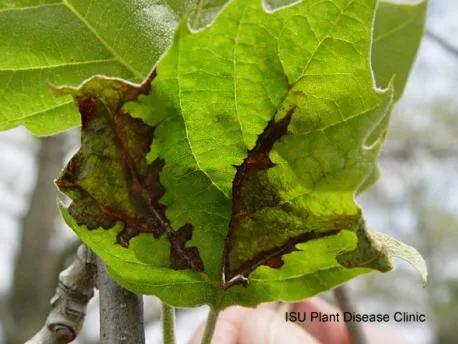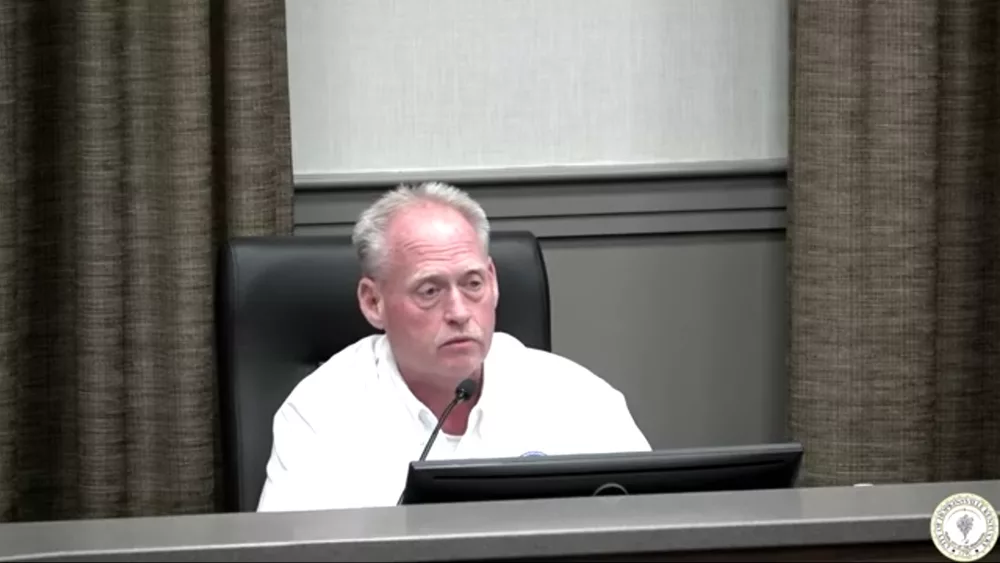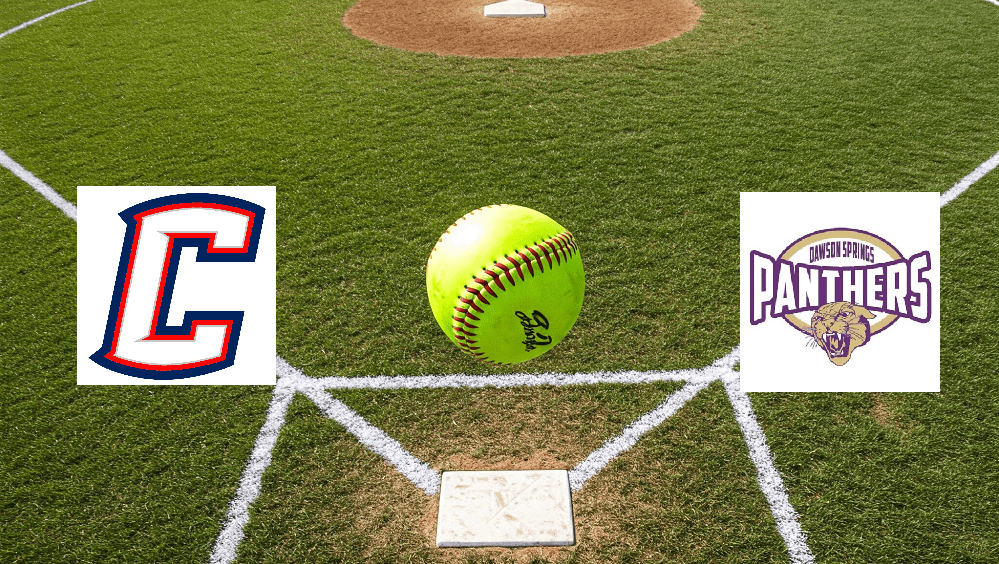The term anthracnose refers to the dark blotching (necrotic) symptom commonly seen on some of our favorite shade trees. Anthracnose can occur in the spring with cool, wet weather and when expanding leaves are affected, leaf distortion frequently results. Defoliation (leaf drop) often occurs during severe infections.
The disease is generally not fatal, and a new flush of foliar growth soon follows defoliation on some tree species. Occasionally, the fungi may also infect twigs and branches resulting in cankers that girdle stems.
The fungal pathogens that cause anthracnose diseases are quite host-specific, meaning that the anthracnose pathogen on oak will not infect ash, etc. Symptom appearance and severity differ with each host and with climatic conditions. Here is a list of some of our common shade trees and symptoms caused by anthracnose.

Ash anthracnose: Common symptoms include brown blotches along leaf edges. Leaf drop often results, and then new leaves soon emerge.
Maple anthracnose: Symptoms begin as leaf spots and may progress into shoot blight and shoot cankers. Leaf spots with brown, somewhat angular symptoms may be confused with tar spot (spots are round and black). Symptom development and susceptibility vary with tree species, but lesions often follow veins.
Oak anthracnose: Not commonly observed in Kentucky. Irregular brown spots develop on leaf tips and along veins.
Sycamore anthracnose: Young, expanding leaves develop irregular dark, dead tissue centered along leaf veins or edges. These dark blotches may turn tan colored as diseased areas of leaves dry out. Blighting of twigs or shoots may follow. Trees produce new foliage rather quickly but affected branches may remain crooked (lateral shoots become dominant when terminals are killed). Also affects London plane tree.
For most trees, anthracnose disease is not lethal. However, repeated defoliation can be stressful to trees. Additionally, persistent rains and disease spread can lead to infection of twigs and branches. Good cultural practices, such as listed below, are important to reduce disease:
– Select a planting site with a sunny eastern exposure to promote rapid drying of foliage early in the day.
– Rake and destroy fallen leaves, as they can be a source of fungal spores. Do not compost.
Remove dead twigs and branches, as fungi can overwinter in diseased wood.
– Reduce plant stress when possible.
– Avoid wounding, such as bumping with mowing equipment or making jagged pruning cuts.
– Maintain mulch 2 to 3 inches thick over the root zone and beyond the drip line (not against the trunk) to help maintain soil moisture and to protect trees from lawnmower injury.
– Protect trees from drought. Water at least once a week during hot, dry months using soakers or drip irrigation. Avoid overhead sprinklers; wet foliage favors sporulation and infection.
– Diagnose and treat insect and disease problems as soon as possible.
– Fungicides are often not recommended. They can be costly and it is difficult to effectively cover large trees.
— Kelly Jackson, Christian County Extension Agent





